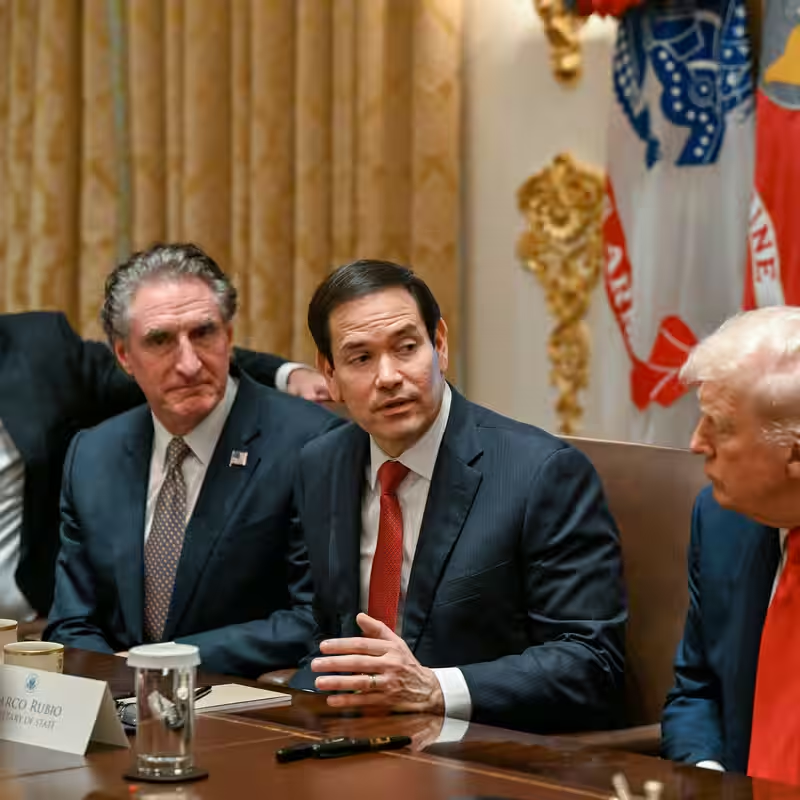Table of Contents
- Rubio’s Announcement Before Israel Trip
- What Is the Proposed Gaza Security Force?
- Why a U.N. Mandate Matters
- The Trump Administration’s Gaza Blueprint
- Obstacles to Deployment
- How Key Players Are Responding
- Sources
Rubio’s Announcement Before Israel Trip
Secretary of State Marco Rubio signaled a major shift in U.S. policy toward Gaza this week, stating that the United States is considering seeking a United Nations mandate to deploy an international stabilization force in the war-torn enclave.
Speaking to reporters at Joint Base Andrews before departing for Israel, Rubio emphasized the urgency of preserving the fragile cease-fire between Israel and Hamas. “It’s important for the United States to help keep the cease-fire together,” he said, adding that “going to the U.N. potentially and getting the international mandate” could be a critical next step.
What Is the Proposed Gaza Security Force?
The proposed Gaza security force is envisioned as a multinational, non-combat stabilization unit with a clear humanitarian and security mission:
- Secure areas vacated by Israeli troops
- Prevent weapons smuggling into Gaza
- Facilitate the safe delivery of humanitarian aid
- Train and support a new Palestinian police force
Importantly, this force would not replace Israeli or Hamas military structures but act as a neutral buffer during the post-conflict transition—a concept modeled loosely on past U.N. peacekeeping operations in Lebanon and the Balkans.
Why a U.N. Mandate Matters
A U.N. Security Council mandate would grant the Gaza security force international legitimacy, legal protections under international law, and access to funding through U.N. peacekeeping budgets. It would also signal broad global consensus—something the U.S. has struggled to achieve in recent Middle East diplomacy.
Without such a mandate, any deployment could be seen as a unilateral Western intervention, risking rejection by regional actors and undermining its effectiveness on the ground.
The Trump Administration’s Gaza Blueprint
Rubio’s comments align with a broader strategy unveiled by President Trump in September 2025. That plan, dubbed the “Gaza Stabilization Framework,” called for a phased Israeli withdrawal paired with the introduction of an “International Stabilization Force” to fill the security vacuum.
Unlike past U.S. approaches that avoided direct security involvement in Gaza, this marks a more assertive—and risky—posture. The administration appears to be betting that a credible third-party presence could prevent Hamas from rearming while creating space for Palestinian governance reforms.
Obstacles to Deployment
Despite the ambition, the path to a functional Gaza security force is fraught with hurdles:
- Russia and China may veto any U.N. resolution perceived as legitimizing U.S.-led military presence.
- Hamas has not formally endorsed the force and may view it as an occupation in disguise.
- Arab states like Egypt and Jordan remain wary of sending troops without ironclad guarantees of Palestinian sovereignty.
- Logistical risks abound in a territory with destroyed infrastructure, unexploded ordnance, and no functioning central authority.
Even if deployed, the force’s success would depend on sustained political will—not just from Washington, but from capitals across Europe, the Gulf, and beyond.
How Key Players Are Responding
Early reactions have been cautious. Israeli officials welcomed the idea in principle but stressed that any force must have “robust rules of engagement” to counter threats. Palestinian Authority leaders called for the force to operate under a clear timeline toward full Palestinian self-rule.
Meanwhile, European diplomats expressed openness—but only if the mission is truly multilateral and not a proxy for U.S. interests. “This can’t look like NATO in Kosovo,” said one senior EU official who spoke on background.
For now, Rubio’s trip to Israel will test whether the cease-fire can hold long enough to even begin serious talks about force composition, command structure, and exit strategy.




